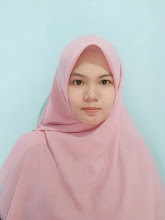age: 5-10
Times: 10-20 minutes
Materials: A piece of paper for each child.
Organization: Whole class.
Aim: To revise language from previous lessons.
Description: The children make paper airplanes. They then answer questions and if they get the right answers, they have the opportunity to throw their planes at ‘targets’ in the room to score points for their team.
Preparation: You will need to prepare a set of questions based on work you have been doing with the children. This might be some vocabulary, a story, some grammar.
Procedures:
- Give each child a piece of paper and then show them how to fold a paper airplane. Be prepared to help children who struggle.
- Let the children play for a short time with their airplanes.
- Divide the children into teams.
- Now decide with the children which parts of the classroom are going to be ‘targets’. Assign a number to each target. Easy targets will have a low number, for example the table could be worth 5 points. Difficult targets will have a high number, for example the trash can might be worth 20 points. The most difficult target should be worth a good lot, for example, 50 points for the clock.
- The children stand in lines in their teams at the front of the class with their airplanes. Ask the first question to the front row of children. The first child to raise their hand has to answer. If the answer is right, they get the chance to throw the airplane at a target of choice. If the airplane hits the target, the child gets the points. If the answer is wrong, another child can try to answer. All the first row must then go to the back of their lines so the next set of children can have a turn.
- The team that scores the most points is the winner!
Once the airplanes have been made, they can be kept for the next time. You can have any number of teams, depending on the number of children in the class and the space you have. In a mixed ability class, try to make sure that children of similar ability are in the same row so that you can adapt the question to the children.
Alternatives
- In small classes the children can play individually.
- The teacher can create a running total over a week, month or term so that the game can be played frequently but for a short time only.
- The children can decorate their planes or make modifications to make them fly better.
- Maria Stakhovskya (Russia) offers an alternative to airplanes. She suggests that you bring in soft balls and skittles/objects to knock down. After answering the question, the children can try to knock down the skittles. They score points depending on the number of skittles they knock down. If you use objects, the children can try to hit the objects with the soft balls. If they are successful, they say something about the object they hit.
Crazy Animals and Other Activities for Teaching English to Young Learners Download PDF


0 comments:
Post a Comment